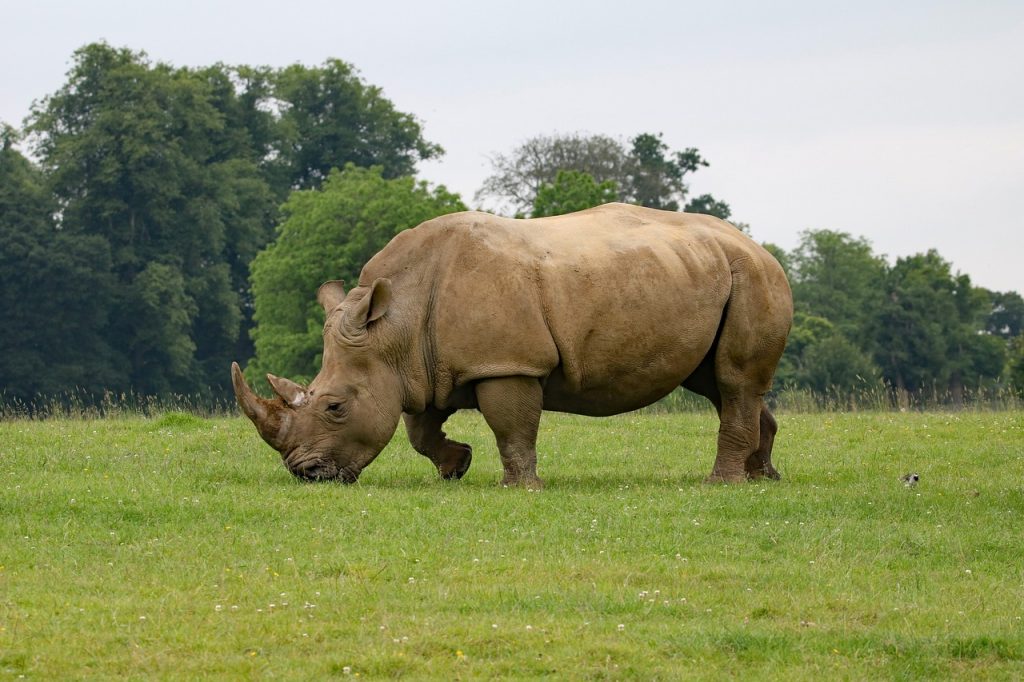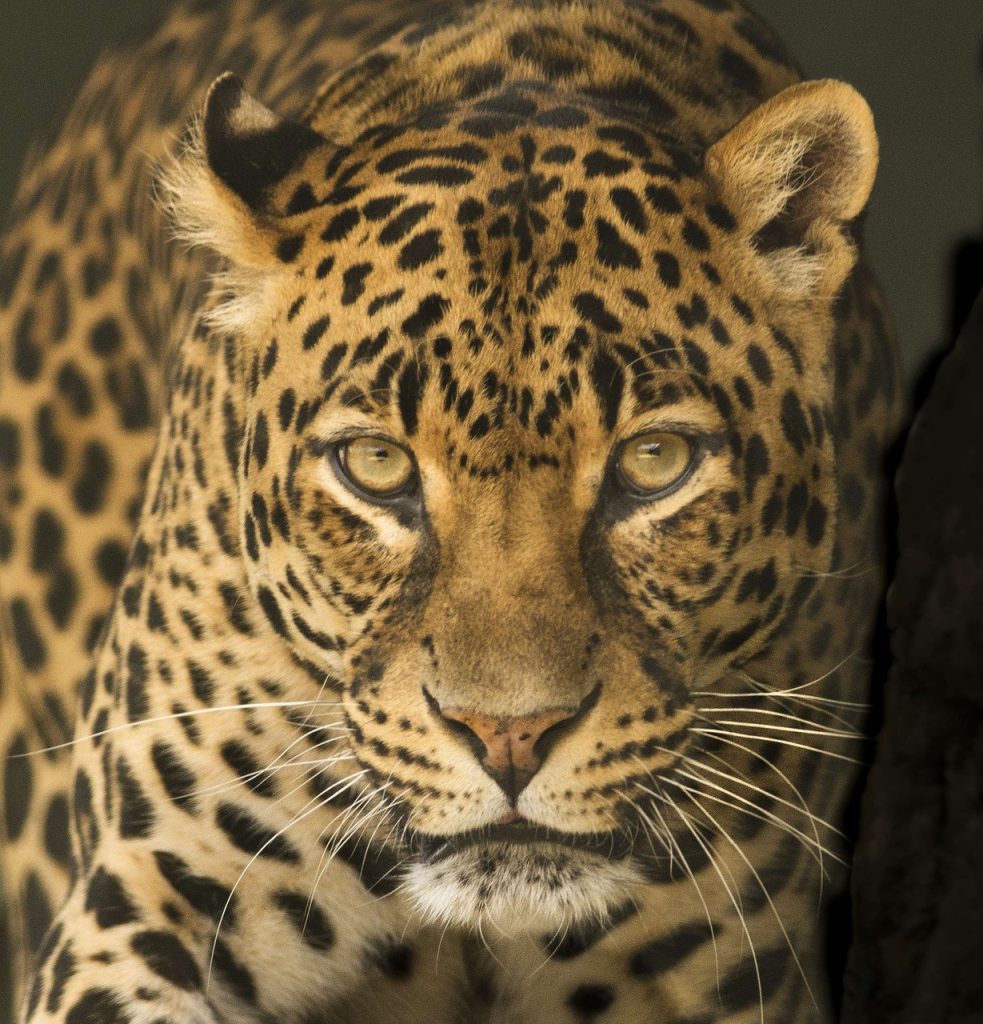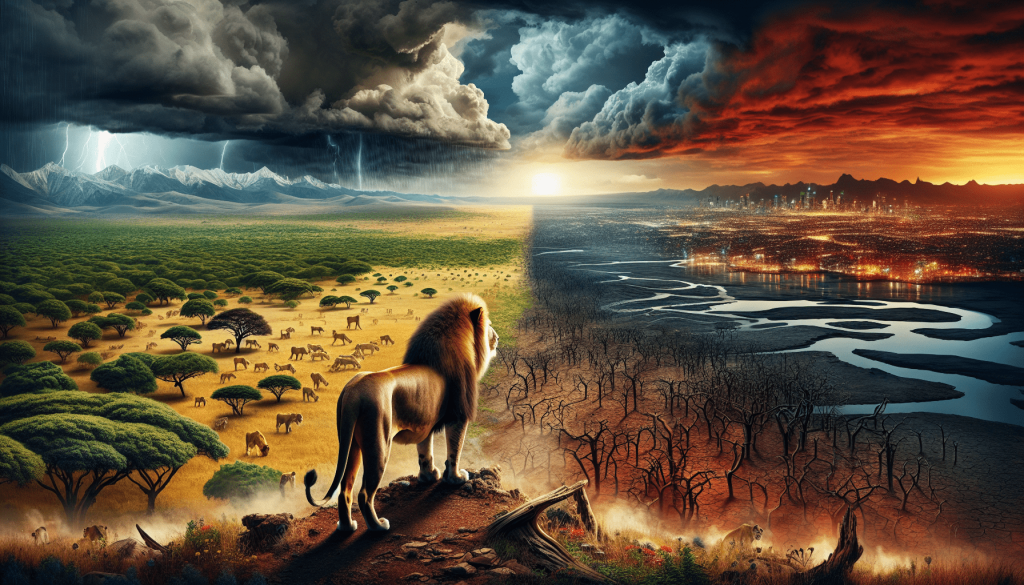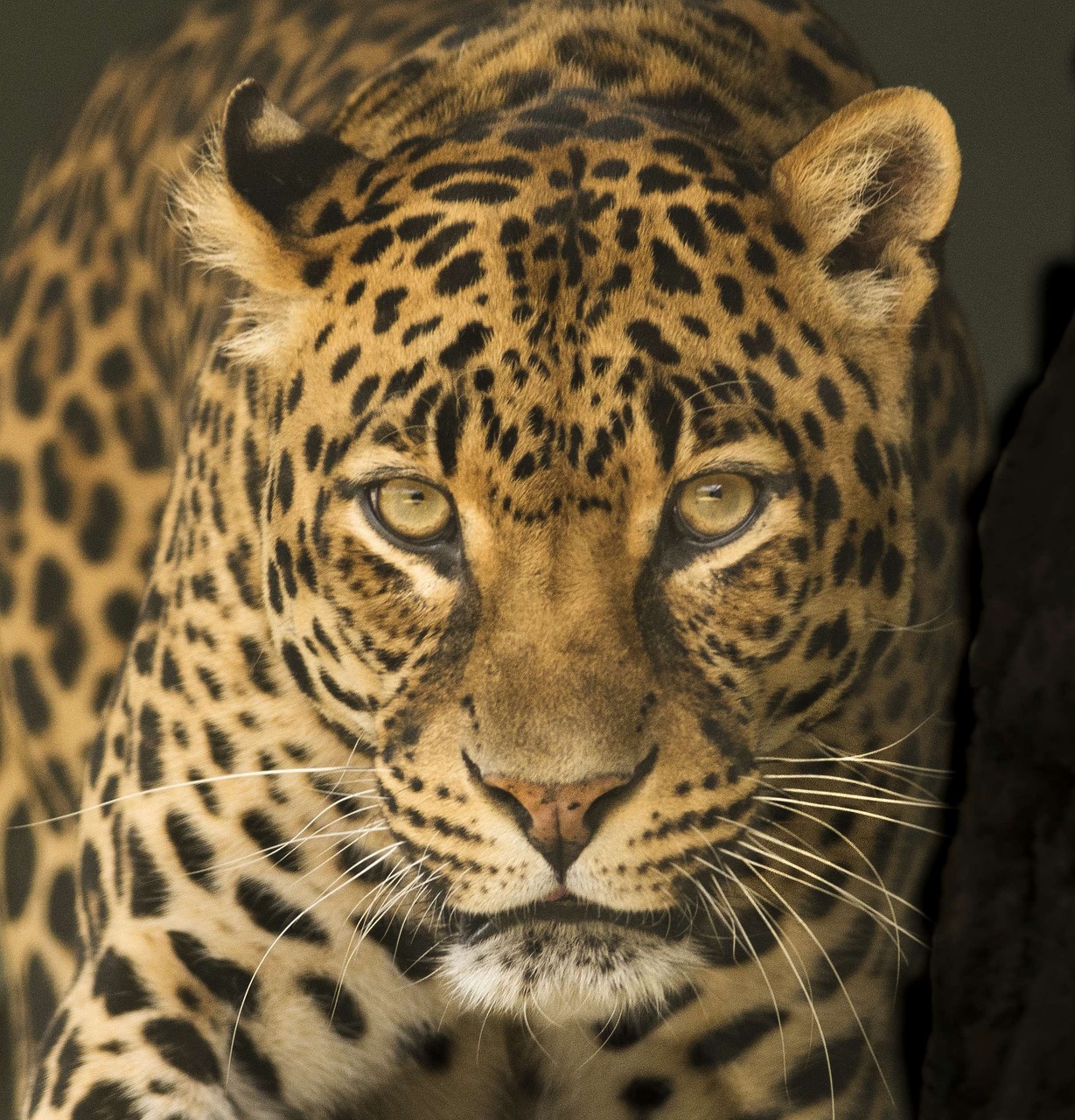So you’re curious about what the future holds for lions? Well, buckle up because we’re about to take a journey into the world of these majestic creatures. In this article, we’ll be exploring the predictions and challenges that lie ahead for lions, as revealed by a comprehensive encyclopedia. From the effects of climate change to the increasing human-lion conflict, get ready to discover the fascinating insights into the future of lions and the obstacles they will face.

Population and Habitat
Current lion population
The lion population has been steadily declining over the years, with the current estimate standing at around 20,000 individuals. This decline is largely attributed to various factors such as habitat loss, human-wildlife conflict, and poaching. It is essential to monitor and manage the lion population to ensure their long-term survival.
Habitat loss
One of the major threats to lion populations is habitat loss. Human activities, including agriculture, urbanization, and industrial development, have resulted in the conversion of lion habitats into human-dominated landscapes. This encroachment can disrupt their natural behavior, affect their ability to find prey, and limit their territories.
Fragmentation of habitats
Habitat fragmentation is another critical challenge that lions face. As their habitats get divided into smaller and isolated patches, lions encounter difficulties in finding suitable territories, accessing prey, and maintaining healthy population dynamics. Fragmentation can lead to increased inbreeding, which can reduce genetic diversity and weaken the overall health of lion populations.
Conservation efforts
Conservation organizations and government agencies are working together to protect lion populations and their habitats. Initiatives such as the creation of protected areas, wildlife corridors, and the implementation of land-use planning aim to safeguard lion habitats. Additionally, conservationists collaborate with local communities to develop sustainable practices that benefit both humans and lions, fostering coexistence.
Climate Change
Effect of climate change on lion habitats
Climate change poses significant challenges for lion habitats. Rising temperatures, changing rainfall patterns, and increased drought frequency can alter vegetation and reduce the availability of suitable habitats for lions. This can disrupt their feeding patterns and even force them to move to new areas in search of food and water.
Changes in prey availability
Climate change can also impact the availability of prey for lions. Alterations in vegetation and the distribution of herbivores can lead to shifts in prey populations, affecting the abundance and distribution of preferred food sources for lions. This can ultimately impact their survival and reproductive success.
Increased human-wildlife conflict
As climate change alters landscapes and disrupts prey availability, lions may increasingly come into contact with human settlements in search of food. This can escalate human-wildlife conflict, as lions may target livestock and raid crops, leading to retaliatory killings and heightened tensions between local communities and lion populations.
Adaptation challenges
Lions face significant challenges in adapting to the rapidly changing environmental conditions caused by climate change. Their ability to adjust to new habitats, prey availability, and human-wildlife conflict requires innovative strategies and effective management practices. Ensuring connectivity between habitats and implementing climate-resilient conservation plans are crucial for their long-term survival.
Human-Wildlife Conflict
Expanding human settlements
As human populations continue to expand, encroachment into lion habitats increases, leading to greater conflict between humans and lions. The expansion of urban areas, agriculture, and infrastructure development reduces the available space for lions and increases the likelihood of encounters and conflicts.
Livestock depredation
Lions often target livestock, leading to economic losses for local communities. The loss of valuable livestock can create hostility towards lions and incentivize retaliatory killings. Finding effective ways to protect livestock and compensate for losses is critical in reducing human-lion conflicts.
Crop raiding
In regions where agriculture is prevalent, lions may raid crops, causing further conflict with local farmers. These crop raids can result in significant economic hardship, particularly for farmers who heavily rely on their harvest for sustenance and income. Implementing measures such as sturdy fences and deterrent methods can help mitigate crop raiding incidents.
Conflict mitigation strategies
To address human-wildlife conflict, numerous strategies have been employed. These include the use of predator-proof enclosures for livestock, the establishment of early warning systems, the promotion of community-based conservation initiatives, and the provision of compensation schemes. By engaging local communities and involving them in decision-making processes, conflicts can be minimized while promoting coexistence.
Conservation and Protection
Role of protected areas
Protected areas play a crucial role in conserving lion populations and their habitats. National parks, wildlife reserves, and other protected areas provide a safe haven where lions can live without the threat of habitat loss and direct human persecution. These areas are instrumental in preserving biodiversity and maintaining ecological processes vital for lion survival.
Anti-poaching efforts
Poaching is a significant threat to lion populations, driven by the illegal trade in lion parts and trophy hunting. To combat this, anti-poaching efforts have been implemented, focusing on strengthening law enforcement, enhancing monitoring systems, and increasing penalties for wildlife crimes. By employing a multi-faceted approach, poaching can be reduced, providing greater protection for lions.
Engagement of local communities
Engaging local communities in lion conservation is essential for sustainable and effective outcomes. The involvement of communities in decision-making processes, equipping them with alternative livelihood options, and initiating education and awareness programs fosters a sense of ownership and stewardship towards lions and their habitats.
International collaboration
Effective lion conservation requires collaboration at both national and international levels. Cooperation between countries, conservation organizations, and governments plays a vital role in sharing knowledge, implementing conservation strategies, and addressing transboundary issues such as poaching and habitat connectivity. International collaboration is crucial for the long-term survival of lions.

Genetic Diversity
Loss of genetic diversity
Lions are experiencing a loss of genetic diversity, primarily due to habitat fragmentation and population isolation. Restricted gene flow among fragmented populations can lead to inbreeding, reducing genetic diversity and increasing the risk of genetic disorders and other health complications within lion populations.
Inbreeding depression
Inbreeding depression refers to the negative impacts on fitness and reproductive success due to the increased expression of harmful genetic traits resulting from inbreeding. In lion populations with low genetic diversity, the risk of inbreeding depression becomes more pronounced, making it imperative to implement strategies that restore genetic diversity and prevent further decline.
Management strategies
To address the issue of genetic diversity, various management strategies are being employed, including the translocation of individuals between populations, supplementation of gene pools, and the establishment of wildlife corridors to facilitate gene flow. These measures aim to increase genetic diversity, enhance population resilience, and reduce the risk of inbreeding depression.
Gene flow and translocations
Gene flow, facilitated by translocations, is vital for maintaining genetic diversity within lion populations. By introducing individuals from different populations, gene pools can be mixed, minimizing the detrimental effects of inbreeding and preserving the adaptive potential of the species. Careful planning, genetic monitoring, and coordination are crucial in ensuring the success of translocation programs.
Technological Advancements
GPS and tracking technologies
Advancements in GPS and tracking technologies have revolutionized lion conservation efforts. By fitting lions with GPS collars, researchers and conservationists can track their movements, monitor their behavior, and gather crucial data on habitat use, population dynamics, and potential threats. These technologies provide valuable insights and inform conservation strategies.
Remote sensing for habitat monitoring
Remote sensing techniques, such as satellite imagery and aerial surveys, enable the monitoring of lion habitats on a large scale. By analyzing vegetation patterns, land cover changes, and habitat suitability, researchers can assess the impact of environmental factors, including climate change and human activities. This information aids in conservation planning and decision-making processes.
Advancements in genetic analysis
Advancements in genetic analysis techniques allow scientists to gain in-depth knowledge about the genetic makeup, relatedness, and diversity of lion populations. Through DNA analysis, researchers can identify individuals, trace their genealogy, and understand population dynamics. This information is crucial for designing effective conservation programs that address genetic concerns.
Application in conservation efforts
The integration of technological advancements in lion conservation efforts provides opportunities for more precise and informed decision-making. The data and insights obtained from GPS tracking, remote sensing, and genetic analysis contribute to the development of targeted conservation strategies, adaptive management plans, and a deeper understanding of the complex interactions between lions and their environment.

Tourism and Economic Impact
Economic benefits of lion tourism
Lion tourism presents significant economic benefits for local communities and countries. Sightings of these majestic creatures attract tourists from around the world, generating revenue through park entrance fees, accommodation, and related services. This economic infusion creates employment opportunities and contributes to local economies, encouraging the protection of lion habitats.
Conservation incentives for communities
Lion conservation can be enhanced by providing incentives to local communities to protect these magnificent creatures. Community-based tourism programs, revenue-sharing schemes, and the development of sustainable livelihood options such as eco-tourism initiatives can foster a sense of stewardship while ensuring the long-term survival of lions.
Sustainable tourism practices
It is crucial to promote sustainable tourism practices to minimize the negative impacts on lion populations and their habitats. Responsible tourism guidelines, such as ensuring visitor limits, minimizing disturbance to wildlife, and implementing waste management systems, can contribute to the preservation of natural environments while providing tourists with enriching experiences.
Balancing tourism and conservation
A delicate balance must be struck between tourism and lion conservation. While tourism provides economic incentives and promotes awareness, unregulated tourism can lead to habitat degradation, disturbance of lion behavior, and excessive pressure on ecosystems. Setting clear guidelines, monitoring visitor activities, and promoting responsible tourism practices are key in maintaining this balance.
Education and Awareness
Promoting lion conservation education
Education plays a critical role in raising awareness about lion conservation and fostering a sense of responsibility towards their protection. Incorporating lion conservation into school curricula, organizing workshops, and conducting outreach programs can help cultivate a deeper understanding of the importance of lions in ecosystems and inspire future generations to actively engage in their conservation.
Lion as an iconic species
Lions hold a special place in human culture and are often considered iconic symbols of wildlife. Their prominence in literature, art, and folklore further fuels the fascination and interest in their conservation. Leveraging this iconic status, conservation organizations can capitalize on public appeal and garner support for lion protection initiatives.
Awareness campaigns and initiatives
Awareness campaigns and initiatives play a significant role in disseminating information, educating the public, and mobilizing support for lion conservation. Utilizing various media platforms, organizing events, and collaborating with influential individuals can increase public engagement, promote positive attitudes towards lions, and encourage conservation actions.
Engagement of youth
Engaging youth in lion conservation efforts is crucial for the long-term preservation of these species. Empowering young individuals through mentorship programs, youth-led conservation projects, and involvement in decision-making processes fosters a sense of ownership and instills a conservation ethic that can shape their future actions and ensure the continued protection of lions.

Disease and Health
Prevalence of diseases in lion populations
Lions can be susceptible to various diseases, including infectious diseases, parasitic infestations, and genetic disorders. Diseases such as bovine tuberculosis, canine distemper, and feline immunodeficiency virus pose significant threats to lion populations, affecting their survival and overall health.
Impact of diseases on lion populations
Diseases can have severe impacts on lion populations, leading to increased mortality rates, reduced reproductive success, and overall population decline. Outbreaks of infectious diseases can spread rapidly within lion populations and even affect other wildlife species sharing the same ecosystem.
Vaccination and health monitoring
Vaccination programs and regular health monitoring play a vital role in mitigating disease impacts on lion populations. By vaccinating lions against specific diseases and implementing surveillance programs to detect and manage disease outbreaks, the overall health and resilience of lion populations can be improved.
Emerging disease threats
Emerging disease threats, such as zoonotic diseases, pose additional challenges for lion conservation. Diseases like COVID-19 have highlighted the interconnectedness between human and wildlife health and the need for proactive monitoring and surveillance to prevent disease transmission between humans and lions.
Policy and Legislation
International regulations on lion protection
International regulations and treaties play a crucial role in lion conservation. The Convention on International Trade in Endangered Species of Wild Fauna and Flora (CITES) regulates the trade in lion parts and products, while the Convention on Biological Diversity (CBD) promotes the conservation and sustainable use of biodiversity, including lions.
National conservation policies
Countries around the world have developed national conservation policies and frameworks to address the protection of lions and their habitats. These policies often include measures to regulate hunting, establish protected areas, and support community-based conservation initiatives. Implementing and enforcing these policies is essential for effective lion conservation.
Legal frameworks against hunting and poaching
Legal frameworks against hunting and poaching are essential components of lion conservation efforts. Laws and regulations prohibiting the illegal trade of lion parts, banning trophy hunting, and imposing strict penalties for wildlife crimes help deter poaching activities and ensure the protection of lions.
Policy implementation challenges
Despite existing policies and legal frameworks, the implementation and enforcement of these measures pose significant challenges. Insufficient resources, corruption, and lack of capacity can hinder the effective execution of policies. Addressing these challenges requires strong political will, international cooperation, and grassroots efforts to bridge the implementation gap.
In conclusion, the future of lions faces a myriad of challenges that threaten their survival. From habitat loss and climate change to human-wildlife conflict and genetic diversity decline, conservationists and stakeholders must work together to develop innovative strategies, employ technological advancements, raise awareness, and enact effective policies to ensure the long-term survival of these iconic and majestic creatures. By prioritizing their conservation, we can secure a future where lions continue to roam the wild, playing their vital role in maintaining the balance of ecosystems and captivating our collective imagination.


